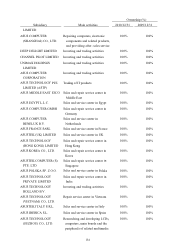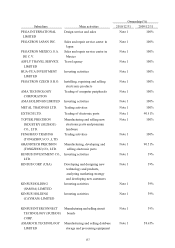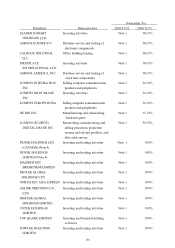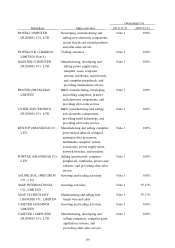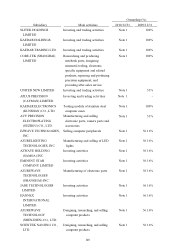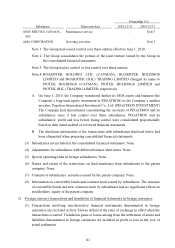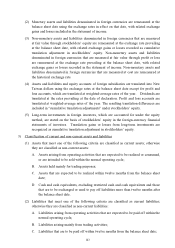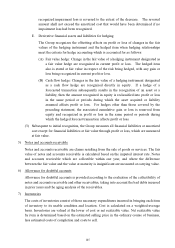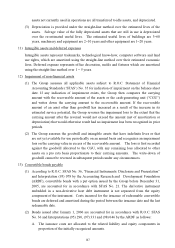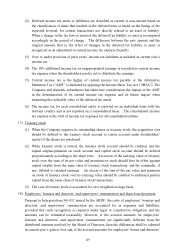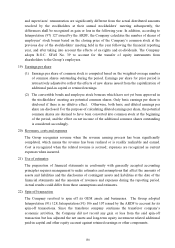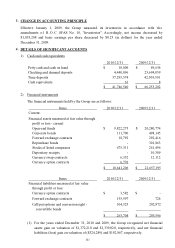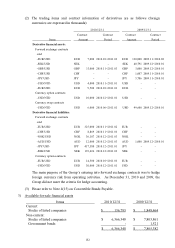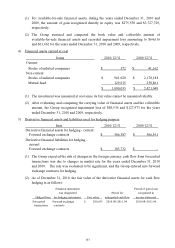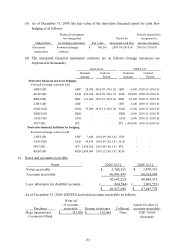Asus 2010 Annual Report Download - page 148
Download and view the complete annual report
Please find page 148 of the 2010 Asus annual report below. You can navigate through the pages in the report by either clicking on the pages listed below, or by using the keyword search tool below to find specific information within the annual report.
144
D. Liabilities for which the repayment date cannot be extended unconditionally to more
than twelve months after the balance sheet date.
4) Financial instruments
(1) In accordance with R.O.C. SFAS No. 34, “Financial Instruments: Recognition and
Measurement” and the “Criteria Governing the Preparation of Financial Reports by
Securities Issuers”, financial assets are classified as financial assets at fair value through
profit or loss, financial assets carried at cost, or available-for-sale financial assets, as
appropriate. Financial liabilities are classified either as financial liabilities at fair value
through profit or loss, or as financial liabilities at cost.
(2) The Group accounts for purchases and sales of financial assets on the trade date, or the
date when the Company commits to purchase or sell the asset. At initial recognition,
financial assets are recognized at fair value plus, in the case of investments that are not
reported at fair value through profit or loss, directly attributable transaction costs.
A. Financial assets measured at fair value through profit or loss
These financial assets are subsequently measured at fair value with changes in fair
value recognized in profit and loss. Stocks of listed companies, convertible bonds
and closed-end funds are measured at closing prices at the balance sheet date.
Open-end funds are measured at the unit price of the net assets at the balance sheet
date.
B. Available-for-sale financial assets
Available-for-sale financial assets are those non-derivative financial assets that are
designated as available for sale or not classified as financial assets at fair value
through profit or loss, held-to-maturity financial assets, or loans and receivables.
These assets are then measured at fair value. The gain or loss arising from change in
fair value, excluding impairment loss and exchange gain or loss from the translation
of monetary financial assets denominated in foreign currencies, is recognized in a
separate component of stockholders’ equity until such investment is reclassified or
disposed of, upon which the cumulative gains or losses previously charged to
stockholders’ equity are transferred to current profit or loss.
C. Financial assets carried at cost
Equity investments without reliable market prices, including emerging and other
unlisted stocks, are measured at cost. If objective evidence of impairment exists, the
Group recognizes impairment loss, which is not reversed in subsequent periods.
D. Held-to-maturity financial assets
Debt securities for which the Company has a positive intention and ability to hold to
maturity are classified as financial assets held to maturity and are carried at
amortized cost under the effective interest method. If objective evidence of
impairment exists, the Group recognizes impairment loss. If, in a subsequent
period, the impairment loss decreases and the decrease is clearly attributable to an
event which occurred after the impairment loss was recognized, the previously


